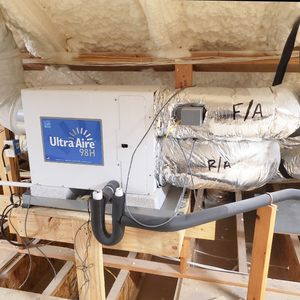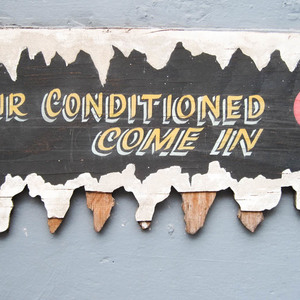
There’s a meme on social media that describes New England as having 12 seasons: Winter, Fool’s Spring, Second Winter, Spring of Deception, Third Winter, The Pollening, Actual Spring, Summer, Hell’s Front Porch, False Fall, Second Summer, and Actual Fall.
As I write this, I’m in my Adirondack chair on Hell’s Front Porch surviving with the help of a New England IPA. The aluminum can is beaded with condensation. Drink fast, I think—that beer isn’t getting colder. It’s not that it’s so hot during the day—94°F is child’s play to folks in Phoenix. It’s that the humidity is gross. When I let the mutts out at 5 AM this morning, the temperature was 74°F and the humidity stood at 95%. The only happy creatures in sight were the slugs on our tomato plants. Yesterday’s temps barely made it into the 80s yet I came home from a day of carpentering encrusted in a mélange of sweat and sawdust.
Yuck.
Why humidity matters
From the standpoint of human comfort, summer humidity is a factor in how our bodies cool themselves because it affects how quickly sweat evaporates. The faster sweat evaporates, the cooler you feel. Evaporative cooling is how humans and dogs handle heat. Humans sweat, dogs evaporate water by panting over their tongues—Sometime houses have evaporative coolers too. It works because above a temperature of absolute zero, molecules are always moving. Some are at a higher energy state and move faster than others that are at a lower energy state.
The average energy of the molecular motion within a body is as measurable as its temperature. Some of the faster moving molecules, those with higher kinetic energy, break away from the body when they reach its surface, as in…
Weekly Newsletter
Get building science and energy efficiency advice, plus special offers, in your inbox.

This article is only available to GBA Prime Members
Sign up for a free trial and get instant access to this article as well as GBA’s complete library of premium articles and construction details.
Start Free TrialAlready a member? Log in















2 Comments
Nice explanations.
Your comment about latent heat being hard to measure reminds me of something I'd been wondering about: does anyone but a cumulative flow meter on their A/C condensate drain? That would be a way to track the successful moisture removal.
Hey Andy - nice article but one mistake in the last paragraph. The indoor Evaporator coil is where the condensate from the air is captured.
The terminology is a bit confusing but it is named based on what is happening to the actual refrigerant - the refrigerant boils in the evaporator (and pulls heat from the indoor air to do so) and the refrigerant condenses from a vapor to a liquid at the outdoor coil (where heat is rejected to the outdoor air). Hope this helps! -mikeb
Log in or become a member to post a comment.
Sign up Log in